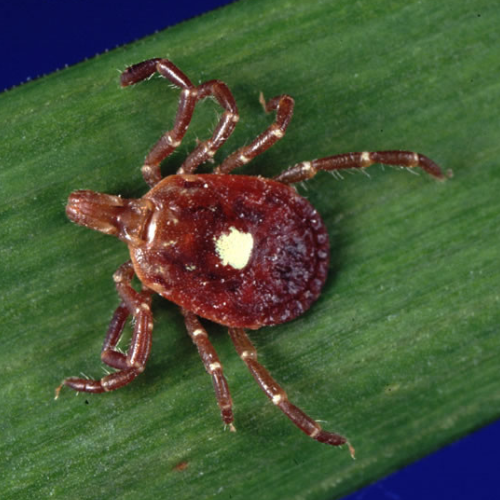Lone Star Tick

Proud Supporter of Disabled Veterans
No Contracts
Services provided without written contracts.
Introduction to
The lone star tick, scientifically known as Amblyomma americanum, is a prevalent tick species found throughout the southeastern and eastern United States. This tick is easily recognized by the distinctive white spot on the back of adult females, giving it its common name. Lone star ticks are of particular concern due to their aggressive feeding behavior and their ability to transmit various diseases to humans and animals. Understanding how to identify, prevent, and professionally manage lone star ticks is crucial for protecting against their bites and the illnesses they can carry. This article explores the recognition, biology, habits, prevention, and professional handling of lone star ticks.
Recognition
Lone star ticks are medium-sized, hard-bodied ticks. Adult females are easily identified by a distinctive white, star-like spot on the center of their reddish-brown back, while males have a more uniform coloration with some faint white markings along the edges of their bodies. Nymphs and larvae are smaller and lack the distinctive spot but still have the reddish-brown coloration. Adults typically measure 3 to 4 millimeters in length before feeding and can swell significantly after a blood meal. Lone star ticks have long, slender mouthparts that make their bites more noticeable and painful compared to other ticks.
Biology
Lone star ticks undergo a three-host life cycle, progressing through four stages: egg, larva, nymph, and adult. Each stage requires a blood meal from a host to progress to the next. Females lay thousands of eggs in protected areas like leaf litter. These eggs hatch into larvae, also known as seed ticks, which seek out small animals or birds for their first blood meal. After feeding, the larvae drop off, molt into nymphs, and seek out another host. Nymphs feed and then molt into adults, which prefer larger hosts such as deer, livestock, pets, and humans. The entire life cycle can take two to three years, depending on environmental conditions.
Habits
Lone star ticks are aggressive feeders and actively seek out hosts by detecting carbon dioxide, heat, and movement. They are primarily found in wooded areas, grassy meadows, and along trails. Unlike other ticks that rely on passive waiting, lone star ticks actively move toward potential hosts. They are most active from early spring to late fall but can be found year-round in warmer climates. Lone star ticks can transmit several diseases, including ehrlichiosis, tularemia, and the recently discovered alpha-gal syndrome, which causes an allergic reaction to red meat. Their bites are often painful and can cause itching and irritation.
Prevention
Preventing lone star tick bites involves several proactive measures. When spending time in tick-prone areas, wear long sleeves, long pants, and closed-toe shoes, and use insect repellents containing DEET, picaridin, or permethrin. Perform regular tick checks on yourself, your family, and pets after outdoor activities. Keep your yard tick-free by mowing the lawn regularly, removing leaf litter, and creating a buffer zone of wood chips or gravel between lawns and wooded areas. Use tick preventatives on pets as recommended by a veterinarian to reduce the risk of ticks entering your home. Stay on marked trails when hiking and avoid brushing against vegetation.
Professional
If you suspect a lone star tick infestation in your home or on your property, professional pest control services can provide effective solutions. STL Pest Control offers specialized treatment plans to manage and eliminate tick infestations. Their experienced technicians will conduct a thorough inspection to identify tick habitats and apply targeted treatments to reduce tick populations. They use environmentally friendly insecticides and provide advice on long-term prevention strategies to keep your property tick-free. Professional intervention ensures that tick problems are resolved safely and effectively, protecting your family and pets from tick-borne diseases.



Our Office







